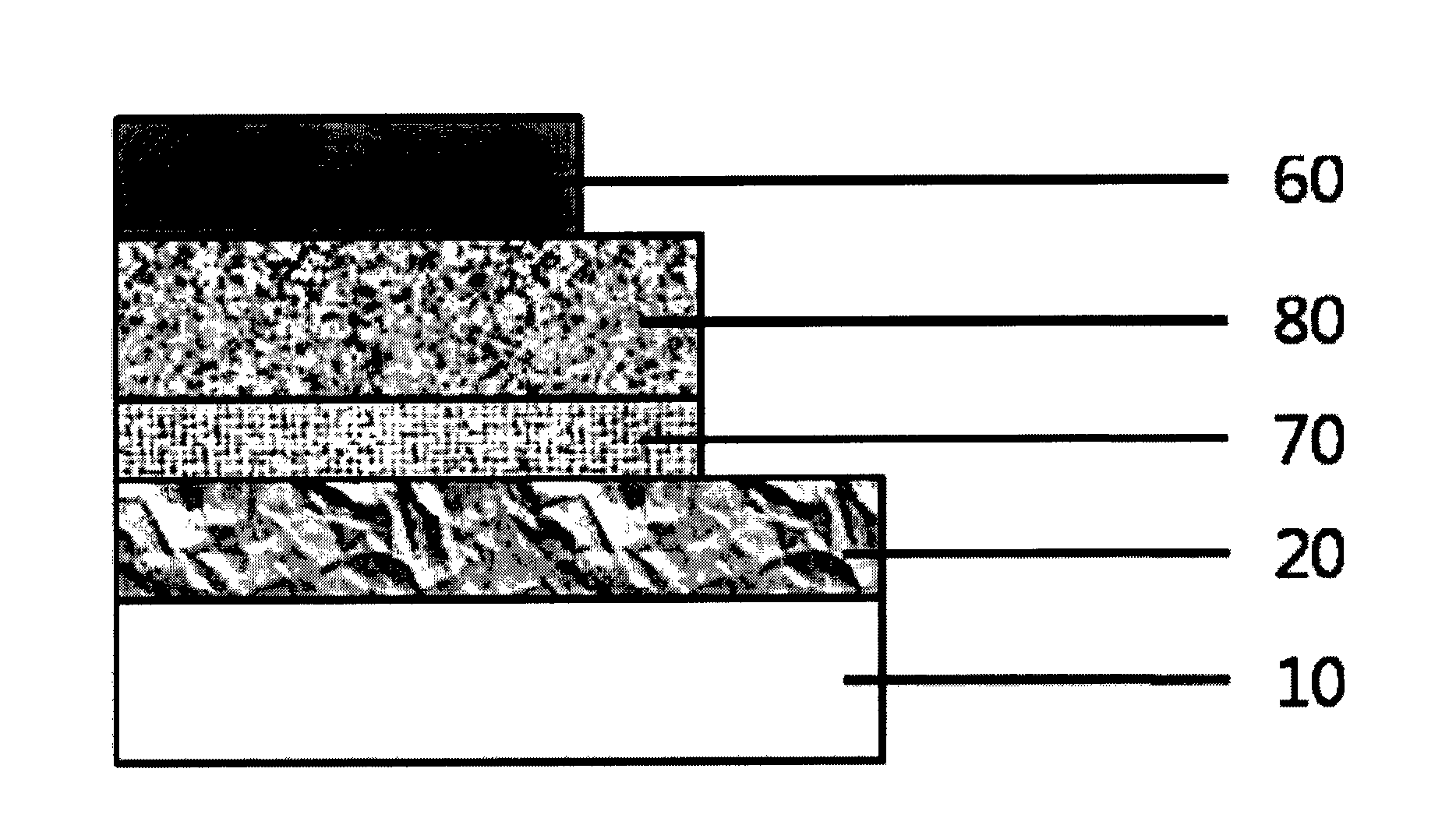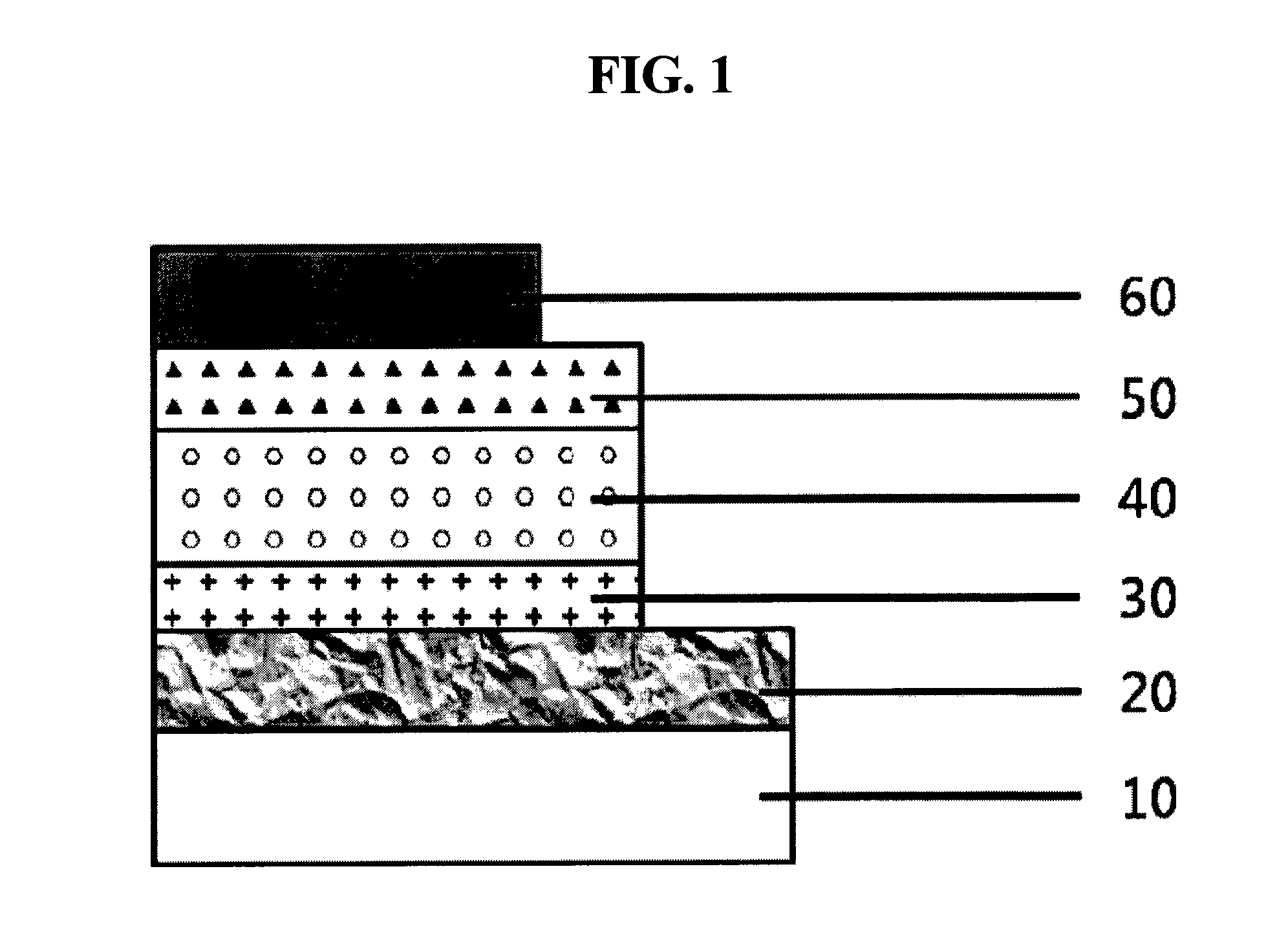Tandem solar cell using amorphous silicon solar cell and organic solar cell
a solar cell and organic technology, applied in the field of tandem solar cells, can solve the problems of inability to meet the needs of mass production, increase production cost, and reduce productivity, and achieve the effects of improving open-circuit voltage performance, mass production, and wide wavelength range of ligh
- Summary
- Abstract
- Description
- Claims
- Application Information
AI Technical Summary
Benefits of technology
Problems solved by technology
Method used
Image
Examples
example 1
Tandem Solar Cell Using PEDOT:PSS as Hole Transporting Layer
[0036]A glass substrate having a transparent electrode layer composed of ITO formed at a thickness of 200 nm thereon was prepared. The glass substrate having the ITO layer was cleaned by washing it with ultra-sonication using isopropylalcohol (IPA) for 10 min, acetone for 10 min, and then IPA for 10 min, drying it at 80° C. in a vacuum for 10 min, and then ozone treating it for 20 min.
[0037]Subsequently, a p-type amorphous silicon layer having a thickness of 5 nm, an i-type amorphous silicon layer having a thickness of 120 nm and an n-type amorphous silicon layer having a thickness of 25 nm were sequentially formed on the ITO transparent electrode layer using PECVD.
[0038]Subsequently, a mixture solution comprising aqueous PEDOT:PSS (CLEVIOS, AI4083) and methanol at a volume ratio of 1:1 was subjected to spin coating at 4000 rpm for 40 sec on the n-type amorphous silicon layer, thus forming a 30 nm-thick hole transporting la...
example 2
Tandem Solar Cell Using MoO3 as Hole Transporting Layer
[0039]A tandem solar cell was manufactured in the same manner as in Example 1, with the exception that MoO3 was used instead of PEDOT:PSS as the material of the hole transporting layer formed on the n-type amorphous silicon layer. The MoO3 hole transporting layer was formed at a thickness of about 3.5 nm using thermal evaporation.
PUM
 Login to View More
Login to View More Abstract
Description
Claims
Application Information
 Login to View More
Login to View More - R&D
- Intellectual Property
- Life Sciences
- Materials
- Tech Scout
- Unparalleled Data Quality
- Higher Quality Content
- 60% Fewer Hallucinations
Browse by: Latest US Patents, China's latest patents, Technical Efficacy Thesaurus, Application Domain, Technology Topic, Popular Technical Reports.
© 2025 PatSnap. All rights reserved.Legal|Privacy policy|Modern Slavery Act Transparency Statement|Sitemap|About US| Contact US: help@patsnap.com



